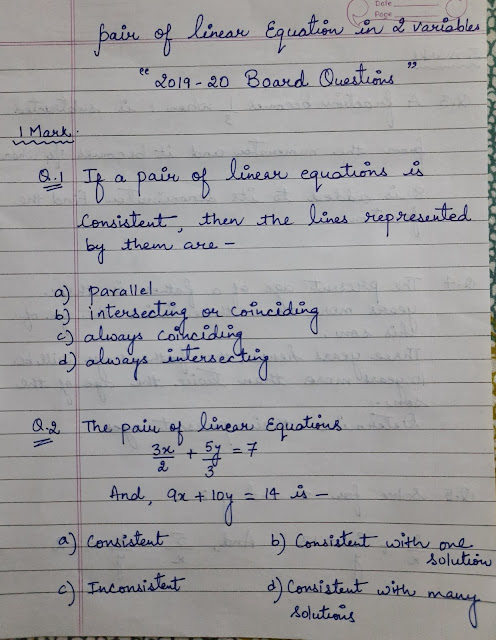Experiment – 1
Force required to move a
wooden block
Our Objective
To establish
relationship between weight of a rectangular wooden block lying on a horizontal
table and the minimum force required to just move it using a spring balance.
The Theory
According to Newton’s
Second Law of Motion, the force acting on a body is directly
proportional to the product of the mass of the body and the acceleration
produced in the body by the application of the force. The acceleration takes
place in the direction in which the force acts.
Newton’s Second Law of
Motion precisely explains the relationship between force and acceleration.
Suppose a body of mass
‘m’ is moving by the application of a force ‘F’, then the produced
acceleration ‘a’ will be directly proportional to the applied force.
Acceleration ∝ Force
F ∝ a
F ∝ m
Therefore, F = kma
Materials Required:
Wooden block and spring
balance of 5 N.
Procedure:
- A wooden block with a hook is placed on a
table.
- Note down the least count of the spring
balance.
- The spring balance is attached to the
hook.
- Hold the spring in such a way that the
reading displayed in the spring balance can be noted down without any
parallax error.
- The applied force on the spring balance is
gradually increased until it just starts to move.
- The reading of the spring balance is
noted.
Observation:
Least count of the
spring balance = value of 1 small division = …….g.wt
|
Trial
No;
|
Mass of the block, M (kg)
|
Force required, F (N)
|
|
|
|
|
|
|
|
|
|
|
|
|
As the mass of the block
increases the force required to move the block is also increases.
Result:
Force applied to just
move the block is directly proportional to the mass of the block.
ie, F ∝ M
Precautions:
- A
suitable spring balance to pull the block must be used.
- The
spring balance should be brought in elastic mode before doing the
experiment.
- The
reading of the spring balance should be taken without any parallax error.
- A
smooth table or surface must be used.
Experiment – 2
(Pressure and area relation)
#Our Objective
To observe and
compare the pressure exerted by a solid iron cuboid on sand while resting on
its three different faces and to calculate the pressure exerted in the three
cases.
#The Theory
To
study and compare the pressure exerted by a solid iron cuboid on sand, we need
to find its mass and weight.
The
mass of an object is a fundamental property of the object; a numerical measure
of its inertia; a fundamental measure of the amount of matter in the object.
The usual symbol for mass is 'm' and its SI unit is kilogram.
In
science, the weight of an object is the force on the object due to gravity. Its
magnitude (a scalar quantity), often denoted by W, is the product of the mass m
of the object and the magnitude of the local gravitational acceleration g.
Thus, W = mg. Since the weight is a force, its SI unit is Newton.
Simply stated, weight is the force acting vertically downward. The weight of an
object is the force with which it is attracted towards the earth, that is:
F = m x g
An
object's weight depends on its environment, while its mass does not. The
SI unit of weight is the same as that of force, that is, Newton (N).The force
acting on an object perpendicular to the surface is called thrust. The effect
of thrust depends on the area on which it acts. Thus:
Thrust = F = m x g
The
thrust on unit area is called pressure. SI unit of pressure is N/m2 or Nm-2 or pascal,
denoted by Pa.
#Materials required:
solid
iron cuboid, scale and dry sand filled tub.
#The Procedure:
Fill
¾ ths of a tray with dry sand and level it.
·
Measure the dimensions of a solid iron cuboid accurately using a
scale. Mark the three faces of the cuboid as A, B and C.
·
Place the solid iron cuboid by the surface A on the plane
levelled sand in the tray.
·
After a few minutes, remove the Iron cuboid and you will see
that it has made a depression in the sand.
·
Measure the depth (depression) it has made in the sand using the
scale.
·
Repeat the same procedure for the other two surfaces.
#Observations:
Gravitational
force on the environment = …….. . m/s2
1. Calculate
the area occupied by each surface of the solid iron cuboid.
·
Area occupied by surface A in the sand = .............cm2
·
Area occupied by surface B in the sand = ............. cm2
·
Area occupied by surface C in the sand = ............. cm2
2. Calculate
the pressure made by each surface of the solid iron cuboid.
· Pressure
made by the surface A in the sand = ............. N
· Pressure
made by the surface B in the sand = ............. N
· Pressure
made by the surface C in the sand = ............. N
3. Calculate
the Depression.
· Depression
made by the surface A in the sand = ............. cm
· Depression
made by the surface B in the sand = ............. cm
· Depression
made by the surface C in the sand = ............. cm
#Learning outcomes
1. The
depression in sand is greater when the solid iron cuboid is placed on its least
surface area.
2. The
pressure exerted by the smallest surface area is greater than the other
surfaces with larger areas.
3. Thus, the
students understood the theories of force, area pressure, depression and their
dependence on each other.
#Precautions:
1. Dried sand
must be used.
2. The tray must
have significant length and width.
3. Appropriate cuboid of dimension must be
used.










